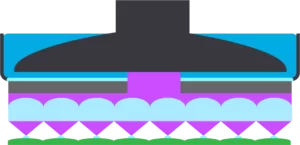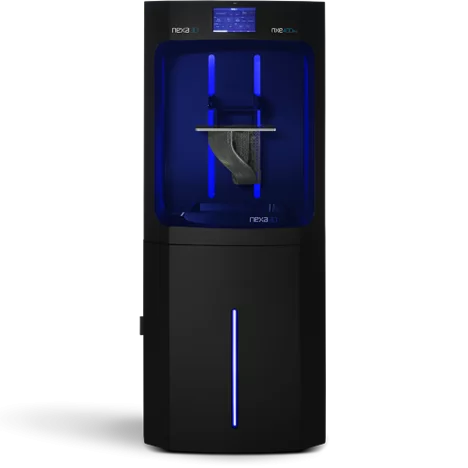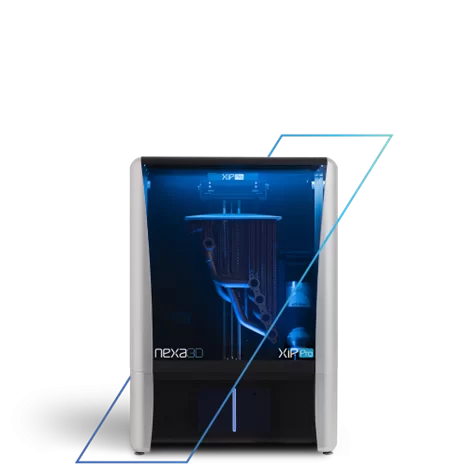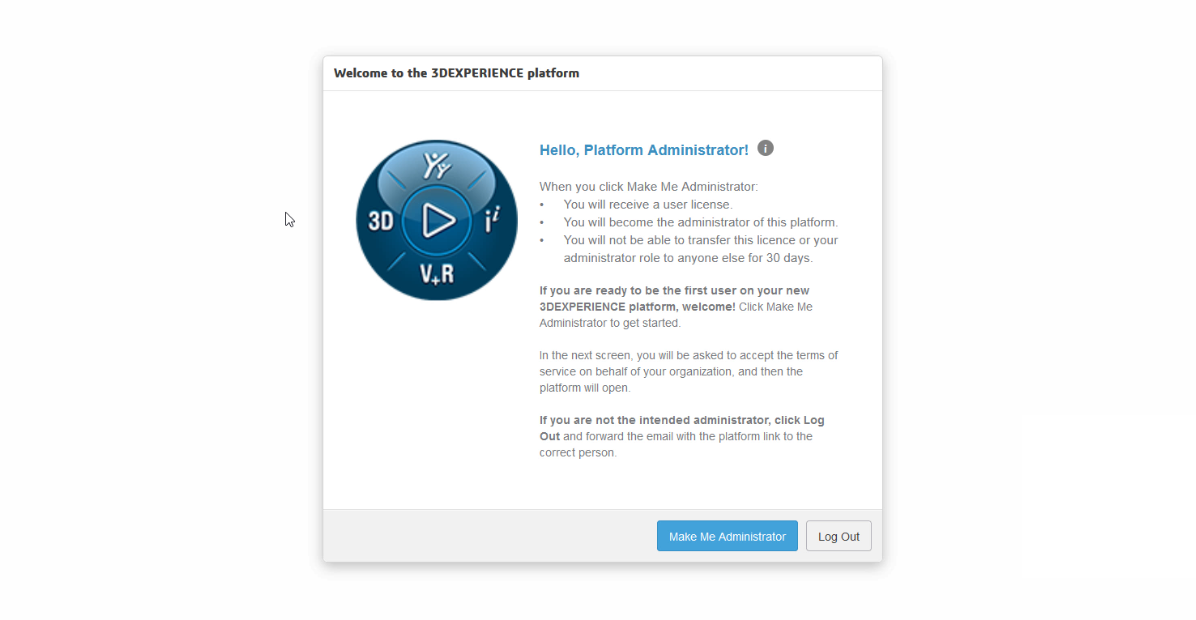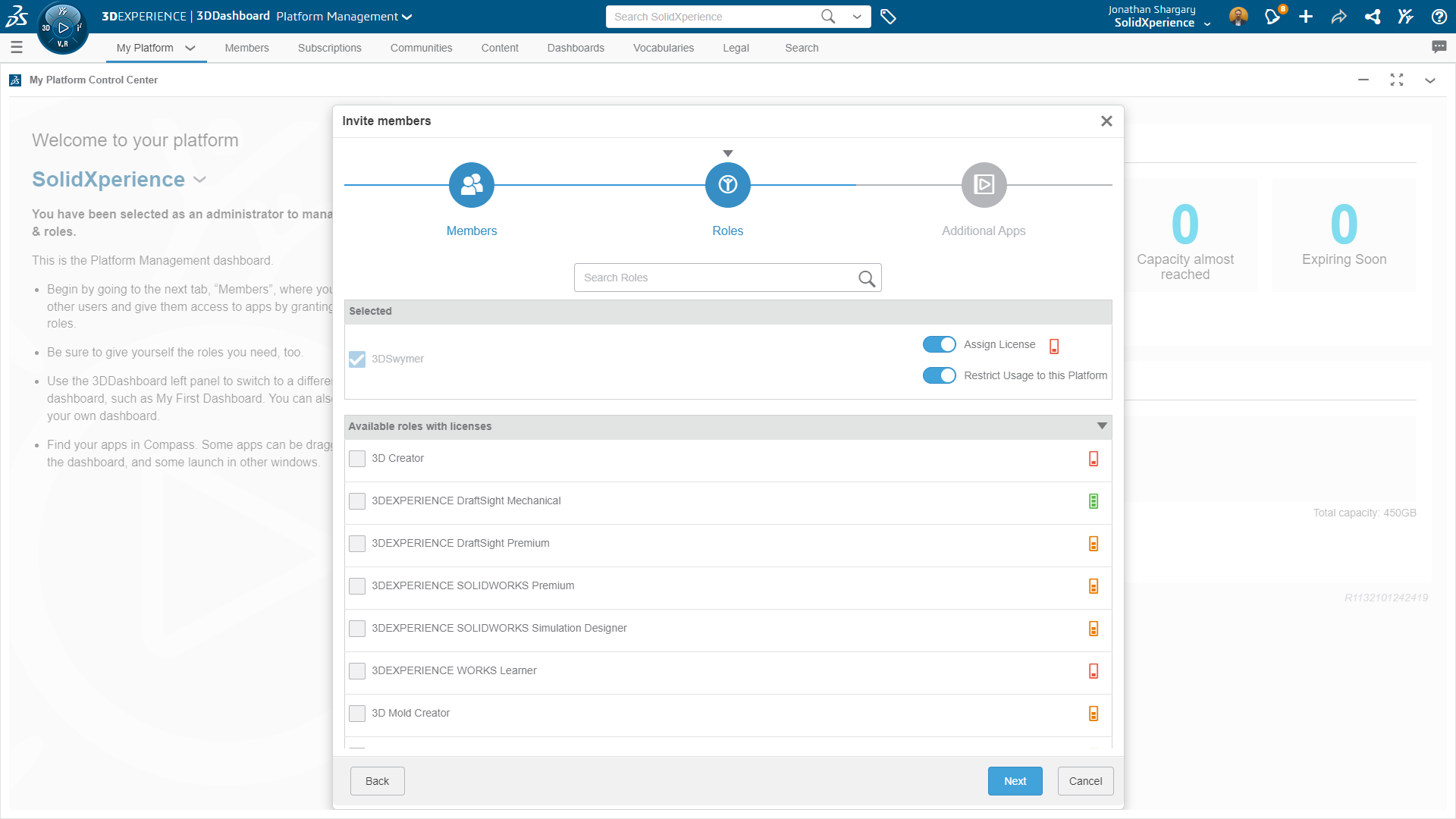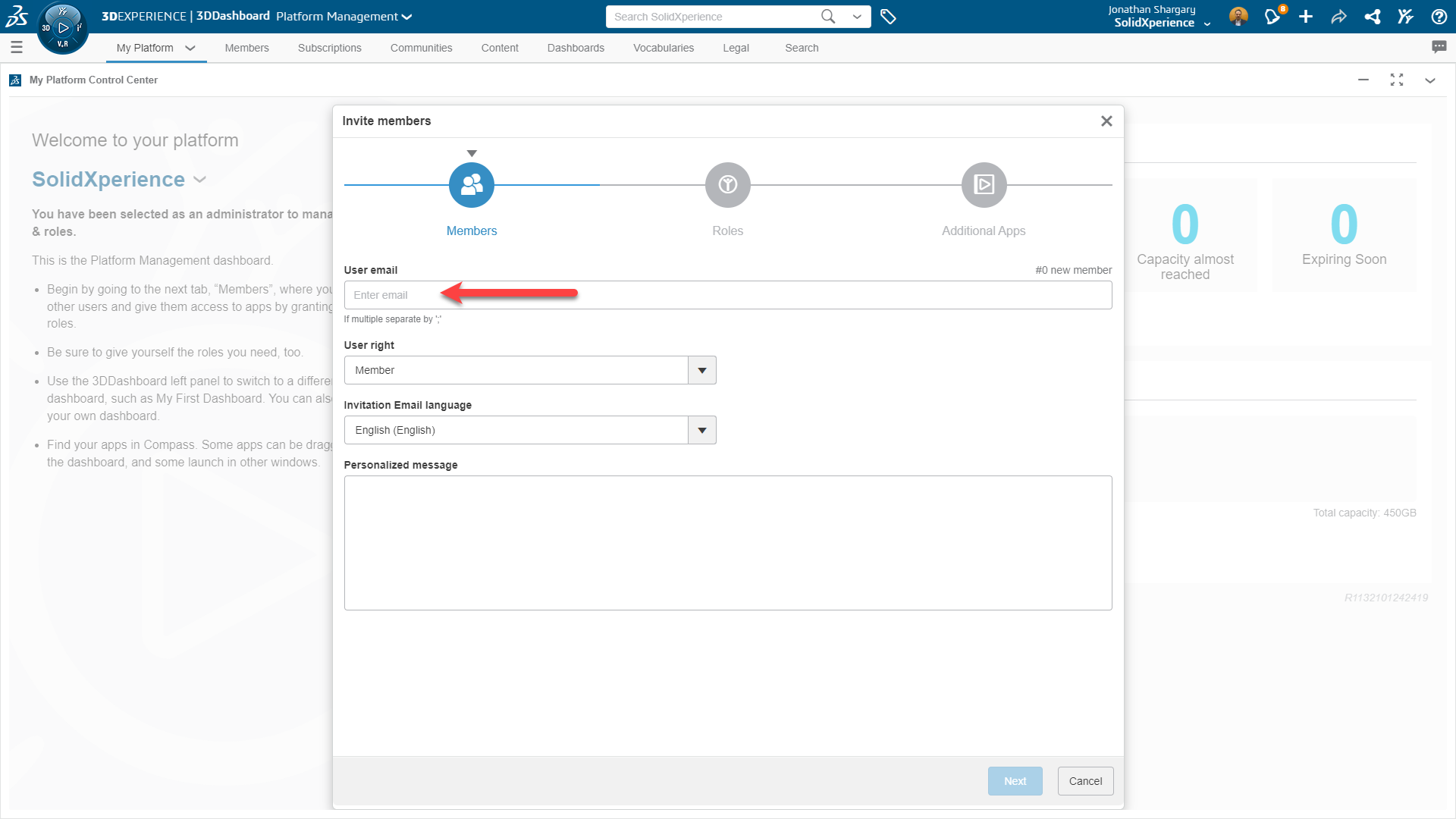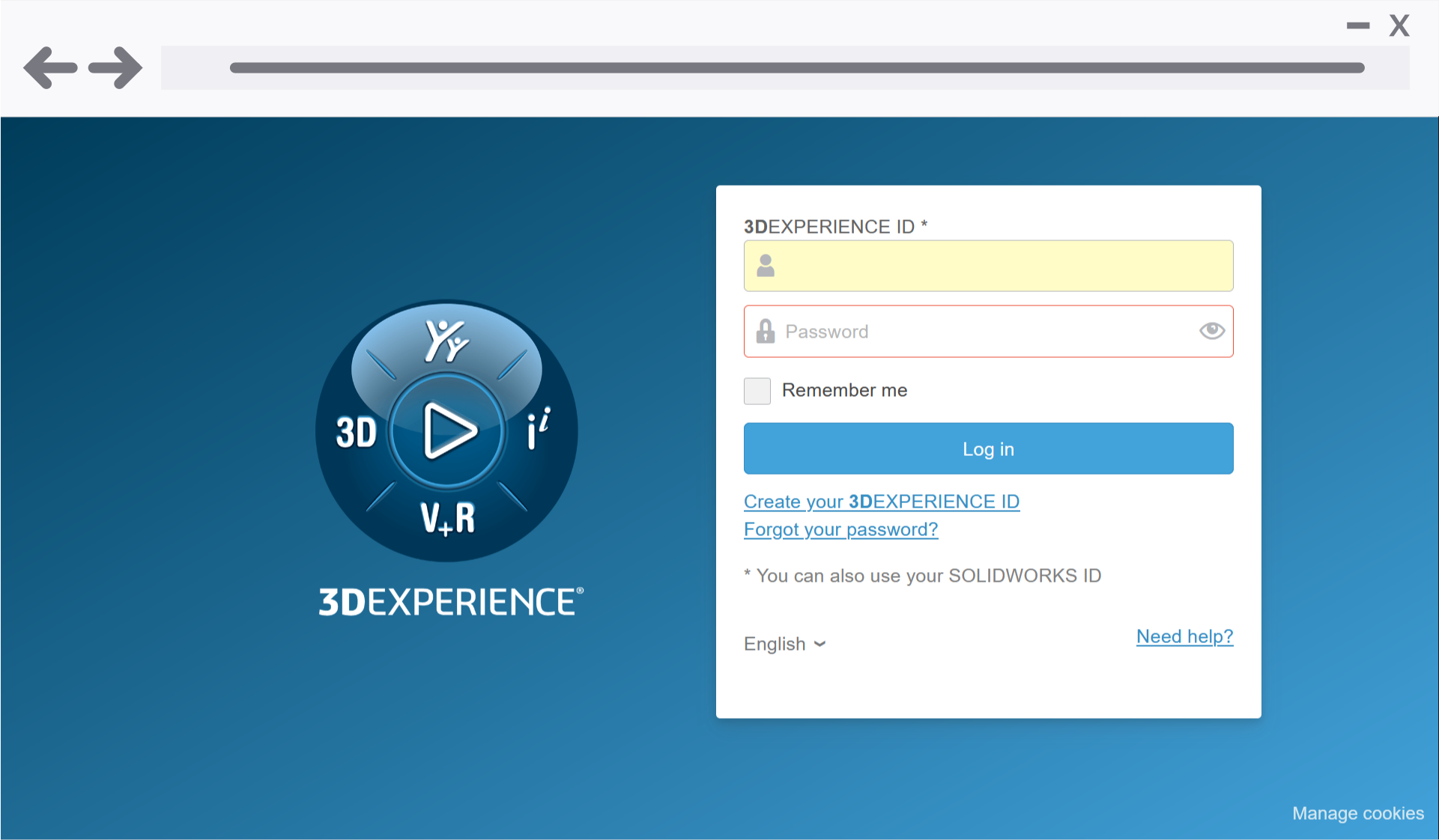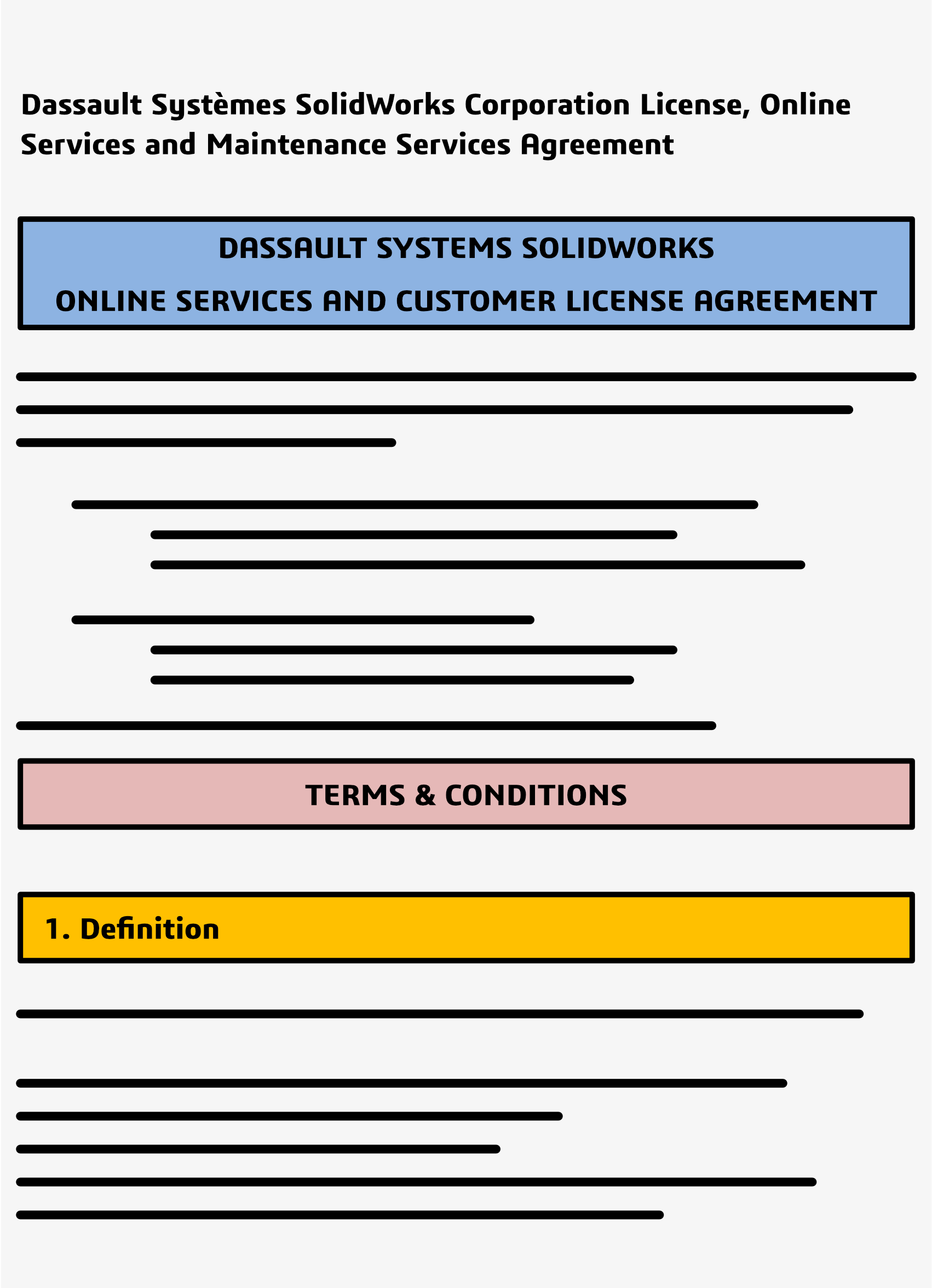When it comes to 3D printing, speed and precision are often seen as trade-offs—you either compromise on one to achieve the other or settle for mediocre results. But what if you didn’t have to? Enter Nexa3D, a company breaking the mold with its cutting-edge Lubricant Sublayer Photo-curing (LSPc) technology. This revolutionary process powers the XiP and NX series printers, enabling professionals across industries to create with unprecedented speed, accuracy, and efficiency.
Understanding LSPc Technology
At its core, LSPc technology is an advanced form of masked stereolithography (mSLA). This process transforms liquid photopolymers into solid objects with unparalleled speed and accuracy. And, unlike traditional SLA methods that utilize lasers to trace each layer, LSPc employs a high-resolution LCD screen to project entire layers simultaneously, significantly accelerating the printing process.
The LSPc Process: A Three-Phase Cycle
Squish (Layer Preparation): The build plate descends into the resin vat, compressing the liquid resin to achieve the desired layer thickness. This ensures uniformity and sets the foundation for precise curing.
Cure (Layer Solidification): An LED light engine projects UV light through the LCD mask, curing the resin in the specified pattern. This simultaneous exposure allows for rapid layer formation without compromising detail.
Peel (Layer Separation): The lubricated interface facilitates the gentle separation of the cured layer from the vat’s membrane as the build plate rises, preparing for the next cycle. This minimizes the peel force and stress on the part, reducing the risk of defects or layer detachment.
Comparing LSPc to Traditional 3D Printing Technologies
- Faster than Traditional SLA Printers
Traditional SLA printers use lasers to trace each layer, resulting in longer production times for large or detailed parts. In contrast, Nexa3D’s LSPc technology cures entire layers simultaneously, achieving remarkable speeds without compromising quality.
- Higher Resolution than DLP Printers
While DLP printers can produce parts quickly, their resolution often decreases as the build area increases. Nexa3D’s use of high-resolution LCD masking ensures consistent quality across the entire build platform, making it ideal for precision 3D printing.
- Superior Surface Finish
The lubricated sublayer minimizes stress during the peeling process, preventing defects like layer shifts or uneven surfaces. This results in smooth, professional grade finishes that are superior to many other 3D printing methods.
Nexa3D Printers Utilizing LSPc Technology
Nexa3D’s XiP and NX series printers bring the power of Lubricant Sublayer Photo-curing (LSPc) technology to life, offering unmatched speed, precision, and versatility for professionals across industries. Whether you’re prototyping a breakthrough product or ramping up production, these printers are designed to keep you ahead of the curve.
XiP Desktop 3D Printer: Compact Powerhouse for Professionals
Perfect for designers, engineers, and small teams, the Nexa3D XiP is a high-performance desktop resin printer that delivers industrial-grade results in a sleek, compact package. It’s fast, reliable, and easy to use—ideal for creating high-quality prototypes in record time.
NXE 400Pro: For Big Ideas and Bigger Prints
When you need a printer that can handle large-scale production without missing a beat, the NXE 400Pro is the answer. Its large build volume and high-speed performance make it the go-to choice for industries like automotive, healthcare, and aerospace.
XiP Pro: The Ultimate Industrial Resin Printer
If productivity and versatility are your priorities, the XiP Pro is a game-changer. With its unmatched build volume and ultra-fast print speeds, it’s designed for large-scale manufacturing that doesn’t compromise on quality.
Designing for Optimal LSPc Performance
To fully leverage the capabilities of Nexa3D printers, it’s essential to design models that align with the nuances of LSPc technology. Thoughtful design considerations can enhance print quality, reduce errors, and optimize production efficiency.
Wall Thickness Recommendations
Minimum Wall Thickness: For reinforced walls, a minimum thickness of 0.3 mm is achievable, especially when oriented vertically. Freestanding walls should maintain a minimum of 0.5 mm to ensure structural integrity. However, for optimal reliability across various orientations, a thickness greater than 1 mm is recommended.
Maximum Wall Thickness: Walls thicker than 5 mm may require extended post-curing times or additional heating to ensure complete curing. It’s advisable to keep wall thickness below 5 mm when possible.
Hole Design Considerations
Vertical Holes: A minimum diameter of 0.3 mm is acceptable, but for consistent results, a diameter greater than 0.8 mm is recommended.
Non-Vertical Holes: Opaque resins can accommodate holes as small as 0.6 mm, while clear resins may require diameters exceeding 2 mm to account for light transmission during curing.
Blind Holes: To facilitate proper resin drainage and curing, limit blind hole depths to less than three times their diameter.
Overhangs and Spans
Horizontal Overhangs: Overhangs extending beyond 2 mm should be supported to prevent sagging or deformation.
Angled Overhangs: Design overhangs with angles steeper than 30° to allow for self-supporting structures. Shallower angles may require additional supports or design modifications.
Engraving and Embossing
Character Height: For clear and legible text, use a minimum character height of 4 mm.
Emboss/Engrave Depth: Maintain a depth equal to or greater than the line width, with a minimum of 0.5 mm, to ensure visibility and structural integrity.
Addressing Cupping Effects
Cup-shaped features can create vacuum effects during the peeling phase, leading to defects or print failures. To mitigate this:
Vent Holes: Incorporate vent holes at the base of concave features to facilitate resin drainage and equalize pressure.
Orientation Adjustments: Position cup-shaped features at angles that minimize vacuum formation and enhance stability.
Optimizing Support Structures and Part Orientation
Proper support structures and strategic part orientation are crucial for achieving high-quality prints with Nexa3D’s LSPc technology. These factors influence surface finish, dimensional accuracy, and overall print success.
Support Strategies
Mitigating Layer Lines: Pronounced layer lines often result from inadequate support. Enhancing support density or incorporating cone supports can provide additional stability, reducing the appearance of layer lines.
Contact Point Adherence: Ensure sufficient contact points between supports and the part to prevent detachment during printing. Adjusting support parameters, such as contact width and penetration depth, can improve adhesion.
Part Orientation Tips
Walls and Overhangs: Orient walls with a minimum angle of 30° to promote self-supporting structures. Horizontal overhangs exceeding 2 mm should be oriented to minimize unsupported spans or supplemented with supports.
Tall and Slender Parts: Limit the height of slender parts to reduce movement during printing. Widening the support base and adding supports to steep surfaces can enhance stability.
Advantages of Nexa3D’s High-Speed 3D Printing
Nexa3D printers equipped with LSPc technology offer distinct advantages that set them apart from other resin 3D printers. Whether your goal is industrial 3D printing or fast prototyping, these benefits make Nexa3D an essential tool for professionals across industries.
- Unmatched Speed
The simultaneous curing of entire layers drastically reduces production times. LSPc: The secret to Nexa3D’s unmatched performance lies in its efficiency, achieving speeds up to 6.5 times faster than traditional SLA or DLP methods. This makes Nexa3D printers a top choice for high-volume production and rapid design iterations.
- Precision and Surface Quality
Thanks to the high-resolution LCD masking system, Nexa3D printers deliver exceptional accuracy, capturing even the most intricate design details. The controlled peeling process ensures smooth surface finishes, reducing the need for post-processing and delivering parts ready for functional or aesthetic use straight off the printer.
- Large Build Volume
Unlike many other resin printers, Nexa3D printers offer a large build volume, enabling users to print bigger parts or multiple smaller components simultaneously. This flexibility is ideal for industries requiring batch production or large-scale prototypes.
- Versatility in Applications
From flexible and impact-resistant materials to temperature-resistant resins, Nexa3D printers support a wide range of photopolymers, allowing users to tailor their prints to specific needs. This makes them perfect for diverse applications, including 3D printing for automotive, medical device 3D printing, and consumer product prototyping.
- Reduced Costs and Waste
By optimizing resin usage and minimizing consumable wear, Nexa3D’s LSPc technology reduces overall operating costs. Faster production times and minimal material waste further contribute to cost efficiency, providing significant ROI for businesses.
Why Choose the XiP and NX Series?
With the XiP and NX series, you’re not just getting a printer—you’re unlocking the tools to push boundaries, bring bold ideas to life, and stay ahead in a rapidly evolving additive manufacturing market. These printers embody the best of advanced 3D printing technology, from their lightning-fast production speeds to their ability to produce intricate designs with precision 3D printing.
So why settle for slow, limited, or outdated technology? Whether you’re prototyping the next big thing or ramping up production, Nexa3D gives you the power to do it faster, better, and smarter. The future of high-speed 3D printing is here—are you ready to join the revolution?
Reach out to Solidxperts today and explore how Nexa3D’s innovative solutions can transform your 3D printing workflows.



